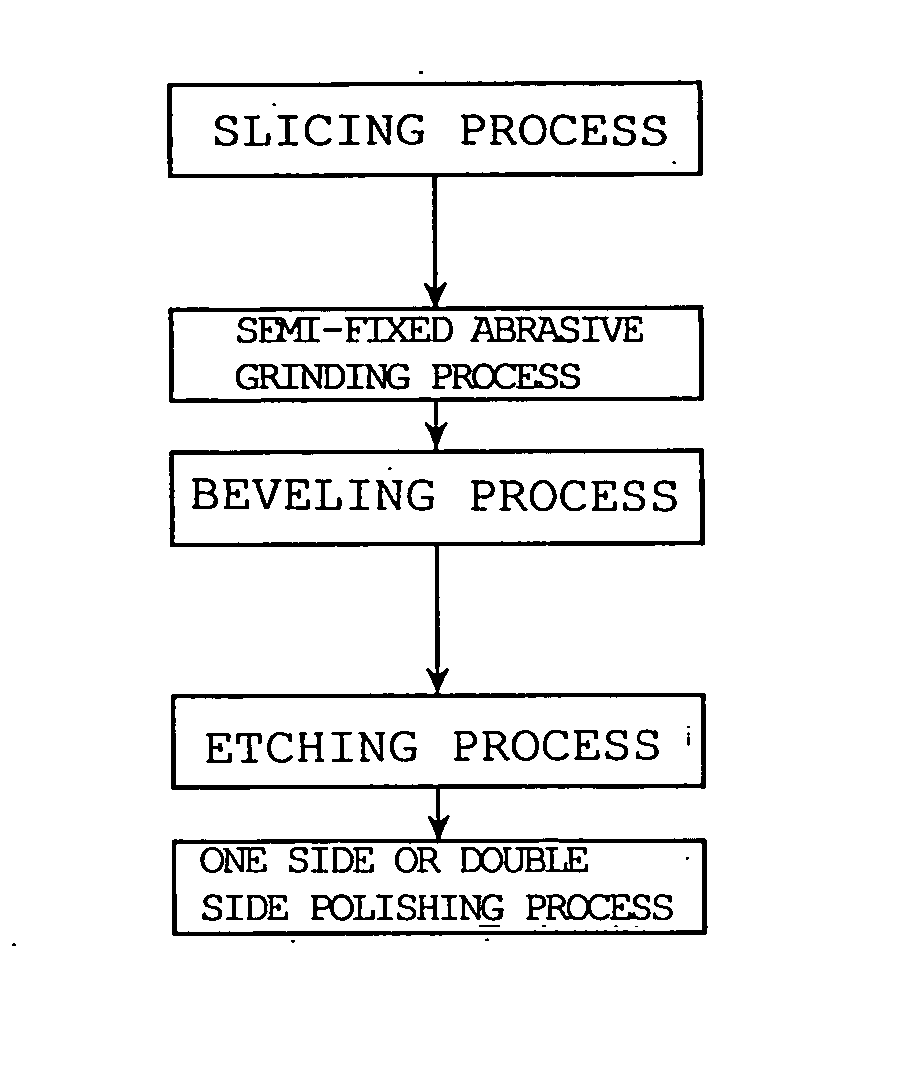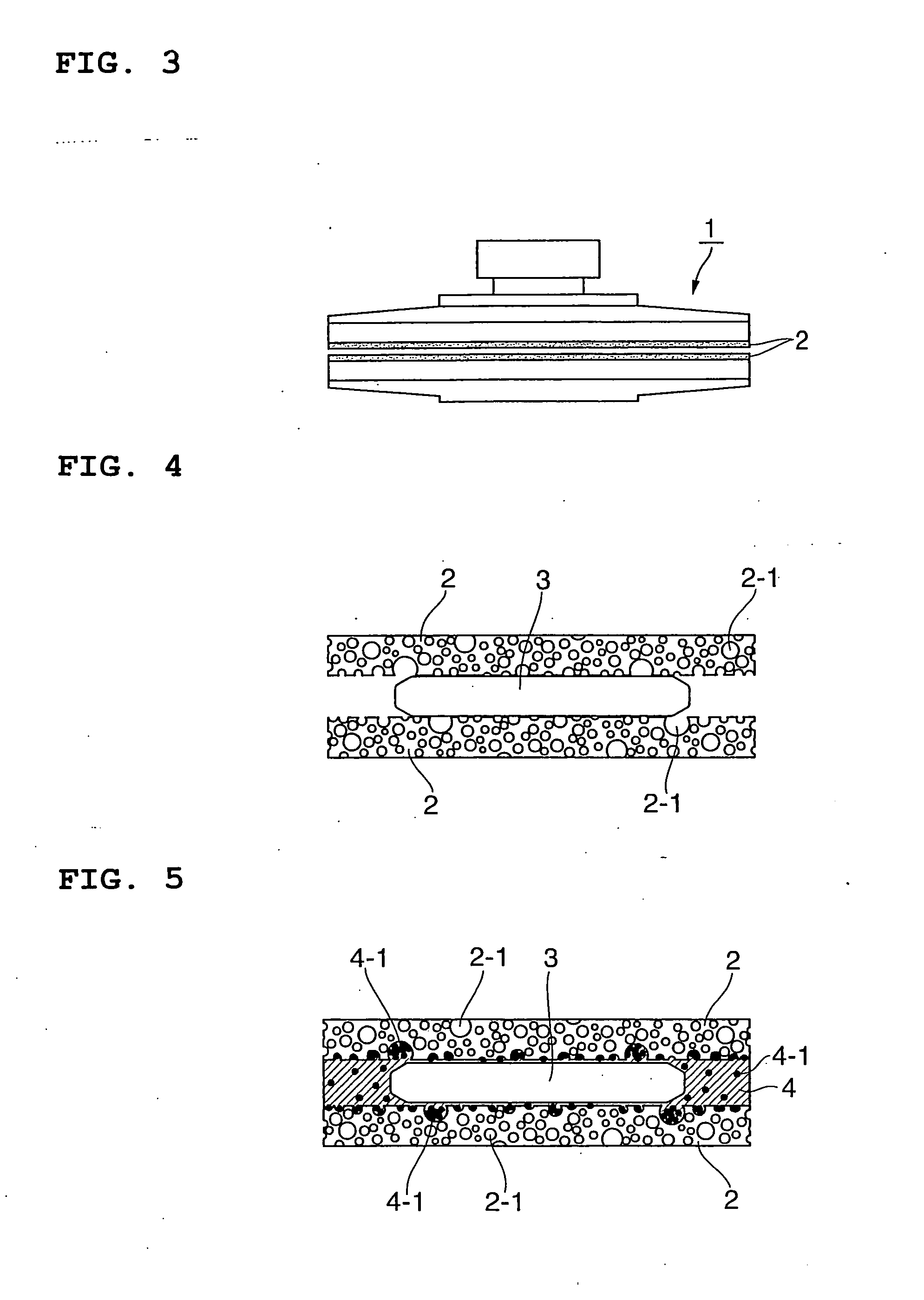Production method for semiconductor wafer
a production method and technology for semiconductors, applied in the direction of flexible wheel, manufacturing tools, lapping machines, etc., can solve the problems of increased operator work load and apparatus size, increased industrial waste (waste lapping powder) due to the increase in used materials, increased size, etc., to achieve excellent finished surface, reduce cost, and reduce grinding damage
- Summary
- Abstract
- Description
- Claims
- Application Information
AI Technical Summary
Benefits of technology
Problems solved by technology
Method used
Image
Examples
example
[0024] A slurry of GC #800 abrasive grains having a concentration of 0.3 wt % was supplied to a double side polisher (FIG. 3) having a porous closed-cell polyurethane pad attached, and semi-fixed abrasive grinding was conducted. Consequently, in a 300 mm wafer, a semi-mirror surface semiconductor wafer was obtained with stock removal rate=2 to 5 μm / min, flatness TTV <1.0 μm, and the surface roughness Ra <400 angstrom.
[0025] Furthermore, the process method (semi-fixed abrasive grinding) was incorporated appropriately in the fabrication process steps shown in FIGS. 1 and 2 to fabricate semiconductor wafers. The results of reductions in thickness of the removed portion and minute surface undulations (nanotopography) compared to the conventional fabrication process shown in FIG. 7 are shown in Table 1.
[0026] As apparent from the results in Table 1, with respect to a nanotopography value of 24.9 nm in the 10 mm square size in the conventional process (FIG. 7), it was 24.7 nm in the fab...
PUM
| Property | Measurement | Unit |
|---|---|---|
| Abrasive | aaaaa | aaaaa |
| Semiconductor properties | aaaaa | aaaaa |
Abstract
Description
Claims
Application Information
 Login to View More
Login to View More - R&D
- Intellectual Property
- Life Sciences
- Materials
- Tech Scout
- Unparalleled Data Quality
- Higher Quality Content
- 60% Fewer Hallucinations
Browse by: Latest US Patents, China's latest patents, Technical Efficacy Thesaurus, Application Domain, Technology Topic, Popular Technical Reports.
© 2025 PatSnap. All rights reserved.Legal|Privacy policy|Modern Slavery Act Transparency Statement|Sitemap|About US| Contact US: help@patsnap.com



